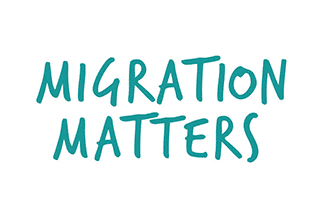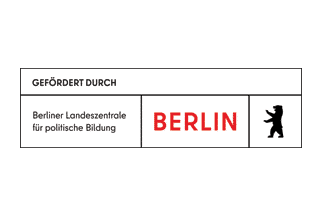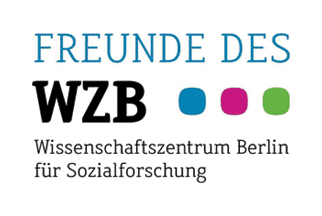Lesson Plan: Who is a ‘Real German’?

This lesson plan invites high school students to delve into the complex tapestry of immigration in Germany, examining societal perceptions and their impact on immigrants’ sense of belonging. Through engaging activities and thought-provoking Migration Matters video content, students will explore the multifaceted concept of identity and what they understand as ‘German’. This lesson challenges conventional narratives and encourages students to compare their own experiences of belonging with those of migrants. It aims to foster an environment of empathy and critical thinking, prompting students to reflect on what actions can contribute to building an inclusive society and on the roles we all play in the integration and belonging of immigrants.
Content Focus
Subject/context: English language, social sciences
Length: 90-minute session
Language of workshop: English (videos available with German subtitles)
Student level: 10-12th graders, minimum B2 English
Key Question: What are society’s perceptions of immigrants (or those with a migration background) in Germany, and how do they affect immigrants’ sense of belonging?
Global Education Topics: Perceptions and attitudes toward migrants, identity, home, integration, belonging, discrimination.
Main Learning Objective: Students will analyze and reflect upon the factors contributing to a sense of belonging for immigrants in Germany.
Sub Learning Objectives:
- Analyze different perspectives on being an immigrant in Germany.
- Explore measures for fostering an inclusive society in Germany.
Lesson Outline
Class Introduction (5 mins)
Objective: Set the stage for the lesson and prepare students for the topic.
Activity: Briefly outline the session’s goals and the key question.
Ice Breaker (10 mins)
Objective: Activate prior knowledge and engage students.
Activity:
- Round Robin: Each student shares one word associated with “migration” and their name.
- Alternative: Write-and-Toss: Students anonymously write their word and share someone else’s.
Where possible: connect student responses back to the key question (What are society’s perceptions of immigrants in Germany, and how do they affect immigrants’ sense of belonging?) to demonstrate how these concepts are related.
Graffiti on the wall (30 mins)
Objective: Gather students’ initial thoughts and create a visual representation of their ideas.
Activity:
- Students respond to posted questions through words or drawings (20 mins)
- Example Questions:
- What does it mean to be German?
- Is Germany a country of immigration? Explain why or why not.
- Can one be both German and something else?
- Discussion: Facilitate a 10-minute conversation about their contributions.
Video Screening (15 mins)
Objective: To introduce diverse perspectives through video and explore the nuances of identity and belonging in Germany.
Activity:
- Introduction: Explain the Migration Matters videos and their relevance to the key question. Encourage students to consider the varied perceptions of German identity.
- Screening: Video #1 (Who gets to be German?) and #2 (You can become a German, but can you become a real German?), pausing for vocabulary and comprehension checks as needed.
- Note: During the screening, add a prompt to the graffiti wall: “What actions can we take to build a more inclusive society in Germany?”
Think / Pair / Share (25 mins)
Objective: To foster critical thinking and collaborative learning on the concept of an inclusive society.
Activity:
- Think: Individuals reflect on possible changes or additions to the graffiti wall prompts in light of the videos (3 mins).
- Pair: In groups of three, students discuss their ideas, ensuring they define and understand the term “inclusive society” before proceeding (7 mins).
- Share: Groups present their findings and contribute to the flip chart (10 mins).
- Discussion: Engage in a full-class discussion about the results and insights, providing facts on diversity in Germany to guide the conversation (10 mins).
Closing (5 mins)
Objective: Wrap up the lesson and reinforce learning.
Activity:
- Recap the main points discussed.
- Reflect on the key question and how their perceptions may have shifted.
Additional Notes & Suggestions
Materials Needed: Flip charts, markers, paper for anonymous writing, projector for videos.
Preparation: Prepare flip chart questions, source and test video equipment, compile basic facts and recent research on migrants in Germany for discussion.
Videos: There are many other videos from this Migration Matters series that you can screen instead of or in addition to those suggested.
Remain flexible: Some discussions or activities may take longer than anticipated and instructors should feel free to adjust timings and activities as needed.
This lesson plan was created as part of the “Research meets school – new perspectives on migration and integration” project and made possible through support by ‘Friends of the WZB’ (Social Science Center Berlin) and the Landeszentrale für politische Bildung (LPB). If you’re interested in Migration Matters giving an offline or online workshop for your students, reach out to us at team[at]migrationmatters.me. All Migration Matters videos are freely available on YouTube and can be used for non-commercial purposes. This lesson plan is free to use and circulate.


